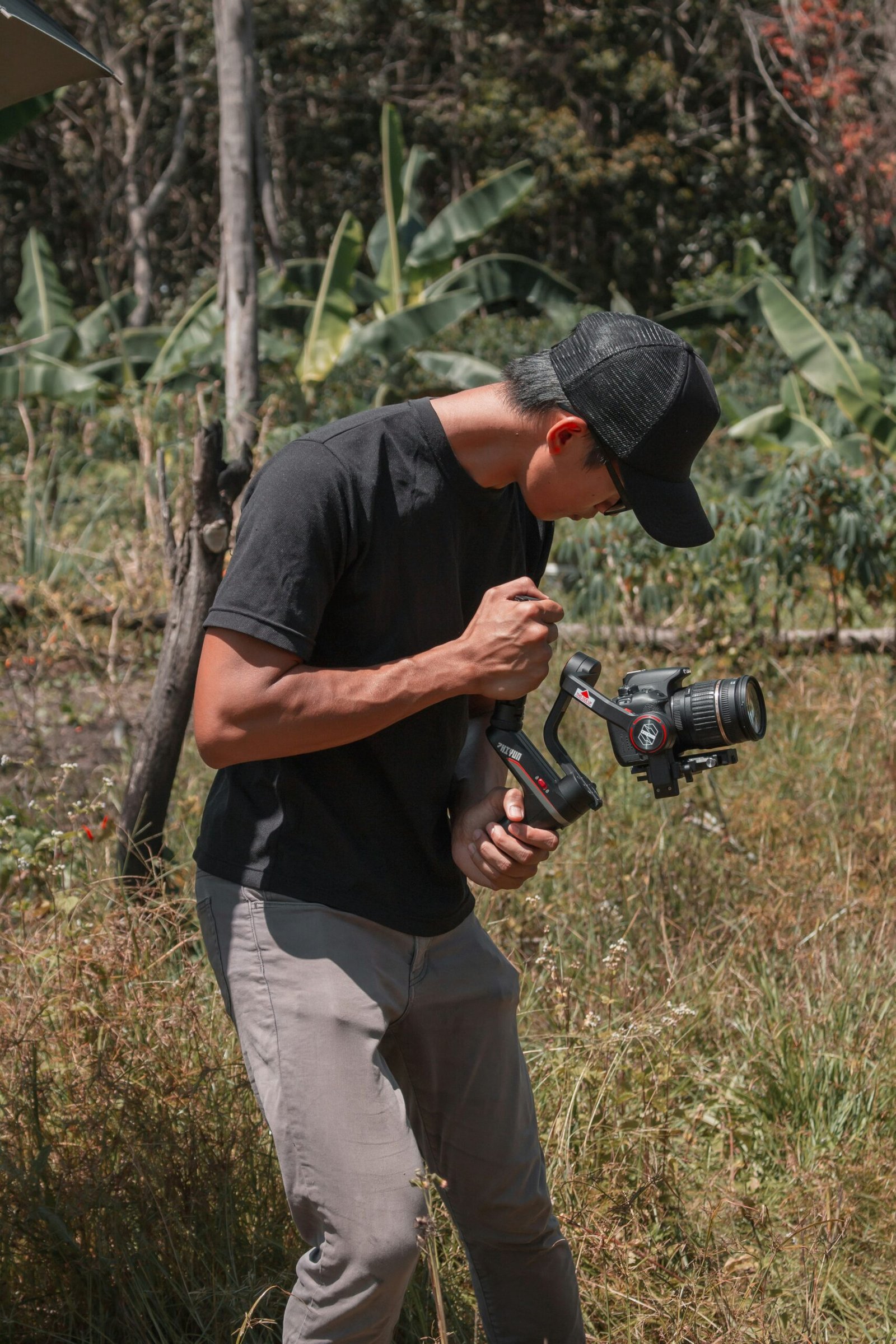
Introduction to Authenticity and Raw Aesthetics
Embracing Imperfection. In the evolving landscape of photography, there has been a noticeable shift towards authenticity and raw aesthetics. This movement emphasizes capturing genuine, unpolished images that convey true emotions and real moments, diverging from the once dominant trend of flawless, highly edited photographs. As society increasingly values transparency and genuineness, there is a growing appreciation for images that reflect the imperfections and nuanced realities of life.
Authenticity in photography is characterized by a minimalistic approach, where the emphasis is on the subject’s natural essence rather than artificial perfection. This approach highlights the beauty of spontaneity and the power of context in storytelling. Raw aesthetics, often devoid of excessive post-processing, allow the inherent qualities of the captured moment to speak for themselves. This shift aligns with a broader societal movement towards valuing realism and connection over superficiality.
The transition from perfection-driven photography to embracing raw aesthetics can also be attributed to the rise of social media platforms and the democratization of photography tools. Individuals and influencers are now capable of sharing their unfiltered experiences, thus building a stronger and more relatable connection with their audience. The authenticity trend bridges the gap between the observer and the observed, fostering a sense of intimacy and trust.
Despite the growing inclination towards authentic and raw imagery, it continues to spark conversations about the balance between artistic expression and realism. As photographers and creators adopt these aesthetics, the challenge lies in maintaining their unique artistic vision while honoring the pursuit of authenticity. The resulting images, while raw and unpolished, often hold a profound beauty that resonates deeply with viewers, making them powerful visual narratives in an age dominated by visual content.
Historical Context of Photography Trends
Throughout the history of photography, trends and attitudes have significantly evolved, driven by technological advancements and shifting societal values. In the early days of photography, technical perfection was paramount. Photographers and their audiences placed a high value on sharpness, clarity, and flawless composition. The advent of darkroom techniques allowed for meticulous editing processes, where every detail could be refined to meet exacting standards. This era was characterized by the pursuit of an idealized reality, often involving retouching to eliminate imperfections and present an almost surreal level of perfection.
The mid-20th century saw a proliferation of new technologies and the widespread availability of photographic equipment, democratizing the medium. However, the emphasis on perfection persisted, with innovations in film and later digital photography enhancing the ability to manipulate images. Throughout this period, the use of airbrushing and photo-editing software became commonplace, reinforcing the trend of presenting polished, idealized visuals.
The turn of the 21st century marked a significant shift in societal attitudes towards authenticity and relatability. With the rise of social media platforms, the demand for content that reflects genuine experiences has surged. People began to value images that conveyed real emotions and candid moments over meticulously engineered perfection. This change was reflected in the popularity of raw aesthetics, where unfiltered images showcasing the beauty of imperfection gained traction. The imperfections, whether they were graininess, unusual compositions, or unexpected moments captured in time, started to be celebrated for their honesty and depth.
Technological advancements further supported this trend. The development of high-quality camera phones and accessible editing apps empowered individuals to capture and share their own authentic moments with ease. This democratization of photography fostered a culture that values the uniqueness of each captured moment, underscoring a profound shift from the historic emphasis on perfection to a contemporary appreciation for authenticity and raw aesthetics.
Why Authenticity Matters in Photography
In an age where social media channels are inundated with perfectly curated images, the essence of authenticity in photography has become increasingly significant. Unlike meticulously staged shots, authentic photography captures unfiltered moments that convey raw emotions, encouraging a more genuine connection between the viewer and the subject. This shift toward authenticity challenges the superficiality often associated with social media, where images are frequently edited to present an idealized version of reality.
Authenticity in photography is paramount as it allows for the portrayal of real-life stories and experiences. When photographers focus on capturing true-to-life moments, they evoke emotions and create a sense of relatability. This deeper emotional connection is instrumental in fostering trust and engagement with audiences. Genuine images have the power to resonate on a personal level, making them more memorable and impactful than their overly polished counterparts.
The benefits of showcasing authenticity in photography are manifold. For instance, brands and content creators who prioritize raw aesthetics often find that their audiences are more responsive and loyal. Consumers today crave transparency, seeking content that mirrors their own lives rather than an unattainable ideal. By presenting images that are truthful and less manipulated, photographers can contribute to a more honest visual culture.
Moreover, authentic photography can break cultural and social barriers, offering a more inclusive and diverse view of the world. It empowers marginalized voices by providing a platform for their stories, capturing moments that might otherwise go unseen. These unfiltered narratives can inspire change, foster empathy, and drive social awareness.
In sum, the move toward authenticity in photography is not merely a trend but a necessary evolution. As audiences grow more discerning, the demand for genuine and relatable content continues to rise. By embracing authenticity, photographers can create powerful imagery that not only captivates but also genuinely connects with and inspires their viewers.
Genres Embracing Raw Aesthetics
Raw aesthetics in photography emphasize the beauty found in imperfection, offering a sense of authenticity that resonates deeply with viewers. This approach is becoming increasingly prevalent across various genres, each adapting it to communicate more truthful and compelling narratives. This section explores how portrait, documentary, and street photography are embracing raw aesthetics.
Portrait photography has seen a significant shift towards showcasing natural, unretouched images. Photographers in this genre are moving away from heavily edited, flawless depictions to more honest portrayals that highlight the genuine emotions and unique characteristics of their subjects. By capturing unfiltered moments, these photographers are able to narrate stories that feel real and relatable, establishing a profound connection with the audience.
In the realm of documentary photography, raw aesthetics play a crucial role in illustrating real-life events and environments. This genre thrives on authenticity, with photographers aiming to present their subjects in a manner that is truthful and unembellished. The embrace of raw aesthetics enables documentary photographers to convey the raw emotion and stark realities of their subjects, often highlighting social issues and human experiences with unfiltered honesty. This approach not only enhances the credibility of the images but also amplifies their impact on viewers.
Street photography, known for capturing candid moments in public spaces, has also welcomed the raw aesthetic. By forgoing meticulous staging and post-production processes, street photographers are able to immortalize fleeting, everyday moments that might otherwise go unnoticed. The spontaneity and imperfection inherent in these images reveal the authentic pulse of urban environments and the diverse narratives of the individuals within them. This unvarnished portrayal brings a vibrancy and authenticity to the images, inviting viewers to see the world from a new, unvarnished perspective.
Across these genres, the integration of raw aesthetics underscores a collective move towards celebrating imperfections and the truth they convey. In doing so, photographers are not merely capturing images but are telling stories that reflect the raw, unfiltered essence of real life, thereby fostering a deeper connection with their audience.
Techniques for Capturing Raw and Authentic Images
Modern photography is increasingly embracing imperfection, showcased through authenticity and raw aesthetics. If you aim to capture images that reflect this trend, understanding the right techniques is essential. Herein, we will discuss several practical tips to aid in producing photographs that resonate with authenticity.
Firstly, utilizing natural light can profoundly influence the authenticity of a photograph. Unlike artificial lighting, natural light produces gentle and dynamic shadows, illuminating subjects more naturally. For outdoor shoots, aim to capture images during the golden hour—shortly after sunrise or before sunset—when the light is soft and warm.
Another crucial aspect is minimizing post-processing. While photo editing software offers powerful tools to enhance images, excessive modifications can often strip away the raw, unfiltered essence of your photographs. Focus on basic adjustments, like slight exposure corrections and minor color grading, to preserve the original feel of the scene.
Additionally, the equipment you use plays a pivotal role in authentic photography. Opt for simple gear, such as a basic DSLR or mirrorless camera, which allows for more spontaneous shooting and less setup time. Also consider using prime lenses, which encourage you to engage more directly with your subject.
Patience is yet another vital virtue when aiming for genuine moments. The best authentic shots often result from waiting for the right moment to naturally unfold. Whether working with people or capturing landscapes, patience allows for a deeper connection with the environment and subjects, revealing unique and candid opportunities.
Authentic photography hinges on leaving behind the pursuit of perfection. By employing natural light, reducing excessive post-processing, using simple equipment, and practicing patience, you pave the way for capturing images that truly reflect raw aesthetics and genuine moments.
Influence of Social Media on Photography Trends
The evolution of photography trends has been significantly influenced by the pervasive use of social media. Platforms like Instagram, Facebook, and TikTok have reshaped how photographers present their work, veering towards a preference for authenticity and raw aesthetics. This shift reflects a broader societal appetite for realness and emotional sincerity, driven by the pressures of online curation and the desire to escape heavily edited, idealized representations.
In the realm of social media, perfection is often a double-edged sword. While meticulously curated feeds used to dominate, boasting flawless images and aesthetically harmonious profiles, a backlash has emerged. Photographers, both amateur and professional, began recognizing the unsustainable nature of an idealized online presence and the fatigue it caused among viewers. The constant pursuit of perfection led to a sense of inauthenticity, making the audience yearn for more relatable content.
Hashtags such as #nofilter and #authenticity have gained popularity, epitomizing this new wave in photography. Social media influencers, photographers, and content creators are increasingly sharing raw, unfiltered moments. These images capture real emotions and candid scenes, breaking away from overly polished and staged presentations. This trend doesn’t only foster a deeper connection with audiences but also encourages a more genuine self-expression.
Moreover, the rise of platforms such as VSCO, which is known for its minimalist aesthetic and preference for unedited beauty, further underscores this shift. Communities on these platforms celebrate the imperfections and nuances that come naturally in life, proving that raw aesthetics hold an intrinsic appeal. Online forums and photography groups bolster this movement by discussing techniques that emphasize authenticity, thus guiding a new generation of photographers towards empathetic storytelling through their lenses.
In this digital age, social media’s encouragement of authenticity and raw aesthetics signifies a more inclusive and holistic approach to photography. It reflects a cultural pivot towards valuing the genuine human experience over the flawless facade, reshaping visual narratives in the process.
Resources for Learning and Inspiration
For photographers striving to master the art of authentic and raw aesthetics, numerous resources are available to foster their growth and creativity. One notable book is “The Soul of the Camera: The Photographer’s Place in Picture-Making” by David duChemin. This insightful read explores the emotional and personal aspects of photography, encouraging photographers to capture genuine moments. Another essential book is “Understanding Exposure” by Bryan Peterson, which delves into technical aspects, aiding photographers in skillfully managing lighting and exposure to enhance the authenticity of their work.
Online courses also play a pivotal role in developing one’s photographic expertise. Platforms like Udemy and Skillshare offer courses specifically focused on authentic photography. For instance, Chris Orwig’s classes on Skillshare dive into using light and emotion to create striking, authentic images. Similarly, Udemy features courses like “Photography Essentials: Natural Light Portraiture,” which teaches techniques for achieving raw, unaltered aesthetics in portraits.
Workshops and in-person training sessions provide immersive, hands-on learning experiences. Organizations such as Magnum Photos and National Geographic frequently organize workshops led by seasoned photographers renowned for their raw aesthetic. These sessions not only enhance technical skills but also offer invaluable insights into the creative processes of accomplished professionals.
Influential photographers further serve as a source of inspiration. Vivian Maier, known for her candid street photography, and Sebastião Salgado, celebrated for his raw and emotive documentary photography, exemplify mastery in capturing authenticity. Contemporary photographers like Ben Lowy and Thilde Jensen are also noteworthy for their impactful work in this style, demonstrating the powerful storytelling potential of raw, unfiltered imagery.
Whether delving into books, engaging with online courses, participating in workshops, or studying the works of influential photographers, these resources collectively provide a robust framework for aspiring photographers. By tapping into these tools, one can effectively refine their craft, embracing the imperfections that define authentic photography.
The Future of Authenticity in Photography
The trajectory of authenticity and raw aesthetics in photography is poised for a dynamic evolution, influenced by both ongoing trends and emerging technologies. As the digital world becomes ever more saturated with polished, perfected images, a counter-movement valuing the unfiltered, spontaneous, and genuine is gaining ground. This shift towards authenticity in photography resonates deeply with audiences longing for real connections and truthful storytelling.
Technological advancements play a crucial role in shaping the future of photography. Artificial intelligence (AI) and machine learning are set to revolutionize how photographers capture and process images. Despite concerns that these tools might lead to over-manipulated content, there’s a growing emphasis on using AI to enhance rather than detract from the inherent imperfections that make photography compelling. For instance, AI-driven cameras can help identify optimal lighting conditions while still preserving the raw, unedited aspects of the shot.
Similarly, augmented reality (AR) and virtual reality (VR) are breaking new ground, offering photographers innovative ways to create immersive, authentic experiences. Through these technologies, viewers can engage with images in more interactive and personal ways, deepening the connection between the photograph and its audience. Embracing such innovations while maintaining a focus on genuine content will be essential for photographers who wish to stand out in an increasingly hyper-real digital landscape.
Moreover, the rise of social media platforms has heightened the emphasis on continuous, real-time sharing of experiences. This has prompted photographers to adopt more spontaneous approaches, capturing candid moments that reflect genuine emotions and situations. The democratization of photography, with more individuals having access to high-quality cameras on their smartphones, further bolsters the trend toward raw aesthetics.
Ultimately, the future of authenticity in photography hinges on the commitment to valuing imperfections. By embracing these flaws, photographers can foster more meaningful storytelling and deeper connections with their audience. This approach not only enhances the artistic quality of the work but also ensures that photography continues to be a powerful medium for capturing and communicating the true essence of the human experience.
Reference Links:
- The Rise of Authentic Photography: Embracing Imperfection – Fstoppers discusses the trend towards authenticity and raw aesthetics in photography.
- Why Imperfection is the New Perfection in Photography – Photography Blog explores why more photographers are embracing raw and unedited styles.
- Raw Photography: Capturing Real Moments – Digital Trends provides insights into the growing popularity of raw photography and its impact on the industry.
Video Link:
- Video: Embracing Raw Photography – A Guide to Authentic Imagery – A YouTube video that offers a guide to capturing and editing raw, authentic images, focusing on techniques and inspiration.
These resources will help photographers understand and apply the principles of authenticity and raw aesthetics, creating images that resonate with realness and emotional depth.




